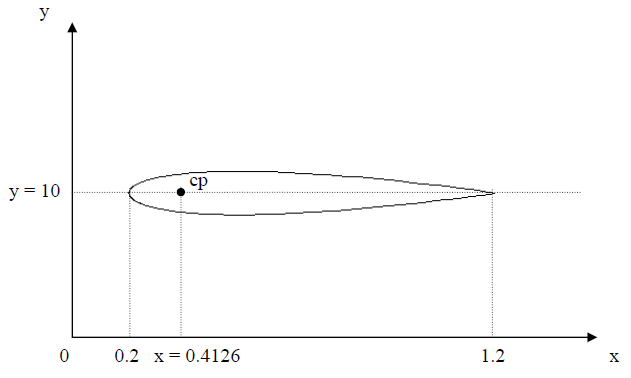For wall zones that you select, you can compute and report the forces along a specified vector, the moments about a specified center and along a specified axis, and the coordinates of the center of pressure. This feature is useful for reporting, for instance, aerodynamic quantities such as lift, drag, and moment coefficients, as well as the center of pressure for an airfoil.
For additional information about forces, moments, and the center of pressure, see Computing Forces, Moments, and the Center of Pressure in the Theory Guide.
For additional information, see the following section:
To obtain a report (for selected wall zones) of forces along a specified vector, moments about a specified center and along a specified axis, or the center of pressure, use the Force Reports Dialog Box (Figure 41.28: The Force Reports Dialog Box).
Results → Reports → Forces
Edit...
The steps for generating the report are as follows:
Specify the type of report in which you are interested by selecting Forces, Moments, or Center of Pressure from the Options list.
Define the settings associated with report you are generating:
For a force report, enter the X, Y, and Z components of the Force Vector along which the forces will be computed.
Important: If
(the
-component of the force) is zero, then either the Y or Z coordinate can be fixed. If
is zero, then either the X or Z coordinate can be fixed. If
is zero, then either the X or Y coordinate can be fixed.
For a moment report, enter the X, Y, and Z coordinates of the Moment Center about which the moments will be computed, as well as the X, Y, and Z components of the Moment Axis along which the moments will be computed.
For a center of pressure report, define the line (for 2D geometries) or plane (for 3D geometries) on which you want to calculate the center of pressure. The line or plane must have one of its coordinate values fixed (for example, a line defined as
). Select the axis (X, Y, or Z) in the Coordinate group box, and then enter the fixed Value. See the example at the end of this section for further details.
Select the Wall Zones (which can also include porous zones when applicable), where you want forces, moment, or the pressure center reported.
To create an output parameter for the reported value, click Save Output Parameter.... The Save Output Parameter Dialog Box (Figure 41.24: The Save Output Parameter Dialog Box) will open where you will specify the name of the newly created output parameter, or overwrite an existing output parameter of the same type. Ansys Fluent automatically creates generic default names for new input and output parameters (for example, parameter-1, parameter-2, and so on).
After the output parameter is created, it is listed in the Parameters Dialog Box. You can create any number of output parameters of this report type.
Note: If you create an output parameter from a force, moment, or center of pressure report and save the case and data (write), an equivalent report definition will be created when you read in the case file.
Click the Print button if you want the results displayed in the console window, or click Write... to save it to a file.
If you selected Forces under Options, the pressure force, viscous force (if appropriate), total forces, pressure coefficient, viscous coefficient, and total coefficients for each selected wall zone will be displayed or saved.
If you selected Moments, the pressure moments, viscous moments (if appropriate), total moments, pressure coefficient, viscous coefficient and total coefficients for the wall zones about the specified center will be displayed or saved. Additionally, the moments and coefficients in the direction of the specified axis will be displayed or saved. The report will include the values for the individual wall zones, as well as the net values for all of the wall zones combined. See Computing Forces, Moments, and the Center of Pressure in the Theory Guide for details about computing forces and moments.
If you selected Center of Pressure, then Ansys Fluent displays or saves the coordinates about which the moment by pressure forces is zero.
Important: You cannot save your output parameter if Center of Pressure is selected; Center of Pressure is not available as an output parameter since it is a set of coordinates.
Important: Note that the reported force and moment coefficients are a function of the values entered in the Reference Values task page (as described in Computing Forces, Moments, and the Center of Pressure in the Theory Guide). Therefore, appropriate values must be entered in the Reference Values task page to get meaningful results.
To demonstrate how you would generate and interpret the center of pressure report, consider an airfoil of chord length 1 m (shown in Figure 41.29: An Airfoil with its Computed Center of Pressure).
Open the Force Reports dialog box and perform the steps that follow.
Results → Reports → Forces
Edit...
Select Center of Pressure from the Options list.
Define the line on which the center of pressure will be calculated. In this case, the Y coordinate for the line has a fixed Value of
10.Select the Wall Zones that are relevant for the computation.
Click Print to have the coordinates of the center of pressure displayed in the console window.
The report generated will be in the following form:
Pressure Center Coordinates (in m): X = 0.41267981 Y = 10





